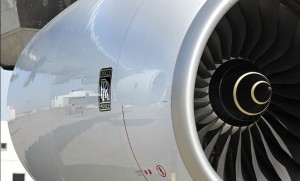Qantas CEO Alan Joyce has told media he believes a material failure or design defect was responsible for Thursday’s uncontained failure of a Rolls-Royce Trent 900 engine on Airbus A380 VH-OQA operated QF32 shortly after takeoff from Singapore.
“This issue does not relate to maintenance, this is an engine issue,” Joyce told media on Friday afternoon. “And the engines were maintained by Rolls-Royce since they’ve been installed on the aircraft. There’s been one service on the engines that Rolls-Royce conducted on it.
“So we believe that this is probably, most likely, a material failure or some sort of design issue that we’re tracking through and trying to understand. We don’t believe this is relating to maintenance in any way.”
Reports suggest a failure of the engine’s intermediate pressure turbine (IPT) disk occurred. Images of engine debris found on the Indonesian island of Batam appear to show a significant section of the IPT disk.
A report on Flightglobal.com citing unnamed sources suggests following inspections after the QF32 incident that two Trent 900 engines on separate Qantas A380s – VH-OQC in Sydney and one of the three A380s stranded in Los Angeles – will be replaced before they can return to flight. According to the report, “abnormalities” in VH-OQC’s number 1 engine could have led to a similar failure as that experienced by QF32.















